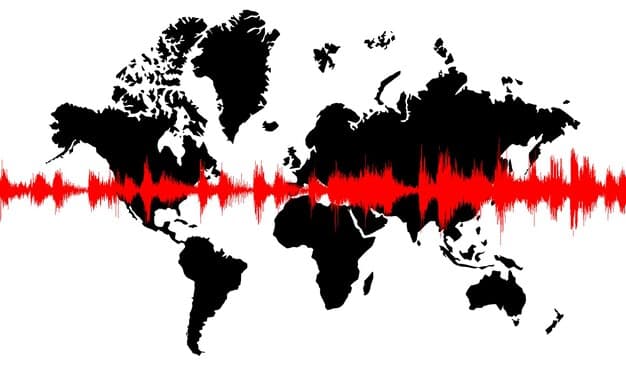Podcast Listener Dynamics: Shifting Demographics and Creator Strategies

The evolving landscape of podcast listenership, driven by significant demographic shifts, necessitates that content creators adapt their strategies, refine targeting, and innovate formats to maintain relevance and foster audience growth in an increasingly competitive digital audio arena.
The audio landscape is constantly evolving, and at its heart lies the dynamic world of podcasts. Understanding the profound
The Evolving Podcast Audience: A Macro View
The podcast industry has witnessed unprecedented growth over the past decade, transforming from a niche medium into a mainstream entertainment and information source. Initially, early adopters were often tech-savvy individuals, predominantly younger males. However, recent data paints a picture of significant diversification, indicating a maturation of the medium.
This macro shift is driven by increased accessibility, broader content offerings, and the integration of podcasts into daily routines through smart speakers and in-car entertainment systems. As technology becomes more ubiquitous, so does the opportunity for wider demographic engagement.
Beyond the Early Adopters: Who’s Tuning In Now?
Latest reports indicate a notable increase in female listenership, nearly evening out the gender gap that once characterized the space. Additionally, older demographics are increasingly embracing podcasts, drawn by true crime narratives, news analyses, and educational content. This expansion means creators can no longer assume a uniform listener profile.
- Gender Diversification: Women now represent a significant portion of the listener base, demanding content that resonates with their interests and perspectives.
- Age Expansion: Listeners aged 55 and above are showing rapid adoption rates, seeking informational and entertainment content tailored to their life stages.
- Ethnic and Cultural Inclusivity: The growth of diverse content creators has attracted a broader multicultural audience, reflecting the global nature of digital media.
These shifts highlight a fundamental truth: the podcast audience is no longer monolithic. It’s a rich tapestry of individuals with varied interests, backgrounds, and listening habits. Recognizing this diversity is the first step toward crafting truly compelling and impactful content that transcends traditional boundaries and appeals to a broader audience base.
Decoding Generational Listening Habits
Understanding how different generations consume podcasts is paramount for targeted content creation and marketing. Each age group brings unique preferences, listening behaviors, and content expectations to the table, influenced by their distinct life experiences and technological fluency.
While Gen Z and Millennials often gravitate towards conversational, interactive, and visually engaging podcasts, older generations may prefer more structured, informative, or storytelling-driven formats. These generational nuances are critical for shaping content strategy.
Gen Z and Millennials: The Digital Natives
For Gen Z and Millennials, podcasts are often an integral part of their multi-platform media consumption. They frequently engage with podcasts while multitasking, such as during commutes, workouts, or household chores. Their preferences lean towards authenticity, relatability, and content that challenges conventional narratives. Short-form audio, often pulled from longer podcast episodes and shared on social media, also plays a significant role in their discovery process.
They are less tethered to traditional broadcast schedules, embracing on-demand consumption and exploring diverse topics from niche hobbies to social justice issues. Their comfort with digital platforms makes them early adopters of new audio technologies and interactive podcasting features.
Gen X and Boomers: Newfound Audiophiles
Gen X and Baby Boomers, initially slower to adopt podcasts, are now rapidly increasing their listenership. Their motivations often differ; many are drawn to podcasts for in-depth analysis, news, and storytelling that they might not find in traditional media. True crime, historical narratives, and health-related content often resonate strongly with these demographics.
They value convenience and ease of use, often accessing podcasts through smart speakers or well-established platforms. While not as prone to multitasking while listening as younger generations, they appreciate the ability to consume content at their own pace and explore topics in greater depth than shorter media formats allow. This segment represents a significant growth opportunity for creators. This demonstrates a growing comfort with digital media, reflecting broader societal trends in technology adoption.
By tailoring subject matter, presentation styles, and promotional efforts to resonate with specific generational cohorts, creators can significantly expand their reach and deepen engagement, ensuring their content finds its intended audience across the generational spectrum.
Geographic and Socioeconomic Influences on Listenership
The geographic distribution and socioeconomic status of podcast listeners significantly impact content choices, advertising strategies, and overall market potential. While podcasting is a global phenomenon, listener profiles can vary dramatically from one region to another, influenced by local culture, internet accessibility, and economic conditions.
Furthermore, socioeconomic factors, such as income level and educational background, often correlate with access to technology and leisure time, shaping both the type of content consumed and the preferred listening environments. Understanding these nuances is vital for content localization and targeted marketing.
Urban vs. Rural Audiences: A Tale of Two Listening Landscapes
Urban areas, with their higher population densities and better internet infrastructure, generally exhibit higher podcast listenership rates. Commuting, a common urban activity, provides prime opportunities for audio consumption. Urban listeners might also be more exposed to diverse cultural influences and cutting-edge trends, impacting their content preferences.
In contrast, rural audiences, while growing, may face challenges with internet access and historically have had fewer local content options. Their content preferences might lean towards topics relevant to their local communities, agriculture, or content that offers a sense of connection to broader cultural conversations they might otherwise miss. Creators can tap into this by producing regionally specific content or by ensuring their general content is widely accessible and relevant.

Education and Income: Shaping Content and Consumption
Data consistently shows a positive correlation between higher education levels and podcast listenership. Educated audiences often seek out podcasts for in-depth learning, critical analysis, and intellectual stimulation, spanning topics from science and history to philosophy and current affairs. This segment values content that challenges their intellect and expands their worldview.
- Higher Education Engagement: Individuals with university degrees are more likely to be weekly podcast listeners, often seeking specialized knowledge.
- Income and Device Access: Higher income typically correlates with better access to premium listening devices (e.g., noise-canceling headphones, smart home devices), enhancing the listening experience.
- Content Investment: Audiences with higher disposable income may be more willing to support creators through Patreon, subscriptions, or purchasing merchandise, indicating strong engagement.
These socioeconomic factors can influence not only the themes that resonate but also the platforms and technologies listeners utilize. Creators should consider these elements when formulating content strategies, advertising partnerships, and potential monetization models, ensuring their efforts are aligned with the realities of their target audience’s daily lives and capabilities.
The Impact of Platform Evolution on Listener Behavior
The landscape of podcast distribution has undergone a massive transformation, moving from rudimentary RSS feeds to sophisticated, feature-rich platforms. This evolution has not only simplified access for listeners but has also profoundly influenced their behavior, discovery habits, and engagement patterns.
Platforms like Spotify, Apple Podcasts, Google Podcasts, and dedicated podcast apps now offer personalized recommendations, seamless integration across devices, and interactive features, all of which shape how and when audiences consume audio content.
From Basic Feeds to Smart Features
The early days of podcasting were characterized by users actively searching for RSS feeds and manually subscribing. Today, listeners benefit from highly curated experiences. Algorithms employed by major platforms learn individual preferences, suggesting new shows based on listening history, genre interests, and even specific episode topics. This has led to a shift from active searching to passive discovery.
Smart features like automatic downloads, variable playback speeds, and sleep timers have made listening more convenient and customizable. These advancements cater to a wider range of listening habits, from dedicated deep dives into complex topics to background listening during daily tasks, enhancing the overall user experience.
The Rise of Exclusive Content and Video Podcasting
The landscape is further reshaped by the emergence of platform-exclusive content and the growing trend of video podcasting. Major platforms are investing heavily in original series and securing exclusive deals with popular creators, driving listeners to specific ecosystems. This creates both opportunities and challenges for content creators.
Video podcasting, supported by platforms like YouTube and Spotify, appeals to audiences who prefer visual components alongside audio. This trend caters to younger demographics who are accustomed to consuming media across multiple sensory modalities. It also offers creators new avenues for engagement, such as:
- Enhanced Storytelling: Visuals can augment narratives, interviews, and demonstrations, making complex topics more accessible.
- Broader Reach: YouTube’s massive user base offers a fertile ground for discoverability beyond traditional audio-only platforms.
- Monetization Opportunities: Video platforms often provide more diverse advertising and sponsorship models.
The continued evolution of platforms means that content creators must remain agile, adapting their distribution strategies and content formats to meet listeners where they are and how they prefer to engage. Embracing these technological shifts is key to maintaining relevance and capturing new audience segments.
Content Trends and Listener Preferences
The vast universe of podcasts offers an unparalleled array of content, from in-depth investigative journalism to lighthearted conversational shows. As listener demographics shift, so too do their content preferences, creating new opportunities and challenges for creators. Staying abreast of popular genres and emerging themes is crucial for developing successful content strategies and captivating new audiences.
Understanding which types of stories and formats resonate most deeply with specific segments of the audience can inform everything from topic selection to hosting style, ensuring maximum impact and engagement levels. This dynamic interplay between supply and demand continually reshapes the industry.
What’s Trending: Genres and Formats
While true crime, news, and comedy have long dominated the charts, there’s a significant uptick in demand for niche content. Topics like financial literacy, mental wellness, self-improvement, and highly specific hobbies are gaining traction, attracting dedicated communities hungry for specialized knowledge and connection. This reflects a broader societal trend towards personalization and tailored experiences.
Furthermore, narrative storytelling, historical documentaries, and interview-based shows continue to perform strongly, appealing to listeners seeking immersive experiences or in-depth insights. The rise of “micro-podcasts” – short, digestible audio snippets – also caters to audiences with limited time, highlighting a demand for flexibility in content length.
- Niche Content Popularity: Specialized topics are finding highly engaged audiences, proving that depth can outweigh broad appeal for certain segments.
- Narrative Excellence: Story-driven podcasts, whether fiction or non-fiction, continue to captivate with their immersive qualities.
- Educational & Self-Improvement: Increasing demand for content that offers practical advice, skills development, or factual knowledge.
From Passive Listening to Active Engagement
Modern listeners are no longer content with being passive recipients of audio. They seek active engagement through various channels. This includes interacting with hosts and other listeners on social media, participating in Q&A sessions, joining online communities dedicated to particular shows, and even financially supporting their favorite creators through crowdfunding platforms.
The interactive nature of platforms has enabled this shift, allowing creators to foster a stronger sense of community. Polls, live Q&A sessions during video podcasts, and dedicated Discord servers are just a few examples of how creators are building loyal fan bases. This engagement transforms a simple listen into a more meaningful and participatory experience, building strong relationships between creators and their audience.
By monitoring these content trends and understanding shifts in listener engagement, creators can fine-tune their offerings, explore new formats, and cultivate a loyal audience that feels deeply connected to their work.

Monetization Strategies for the Evolving Audience
As the podcast listener base diversifies and expands, so do the opportunities for effective monetization. Traditional advertising models, while still prevalent, are increasingly complemented by innovative approaches that capitalize on strong listener engagement and evolving consumption habits. For content creators, adapting monetization strategies to align with these demographic shifts is crucial for sustainable growth.
Understanding the value listeners place on content and finding respectful ways to convert that value into revenue pathways is the core challenge and opportunity in today’s podcasting environment. Diversification of income streams is often the key to long-term success, reducing reliance on a single revenue source.
Beyond Traditional Ads: New Revenue Streams
While dynamic ad insertion and host-read sponsorships remain foundational, creators are exploring a richer tapestry of revenue streams. This includes direct listener support mechanisms like Patreon subscriptions, where loyal fans contribute financially for exclusive content, early access, or behind-the-scenes material. This model fosters a deeper connection and sense of community between creators and their audience.
Brand partnerships and native advertising, where content is seamlessly integrated with a brand’s message in an authentic way, are also gaining traction. This moves beyond transactional advertising to more collaborative and creative content sponsorships. Furthermore, merchandise sales, live events, and premium content offerings (e.g., bonus episodes, ad-free versions) are becoming viable income sources, appealing to highly engaged fans.
Advertiser Adaptations: Targeting Diverse Listeners
Advertisers are also refining their approaches to reach the diverse podcast audience effectively. Gone are the days of broad, untargeted campaigns. Data-driven insights into listener demographics, psychographics, and listening behaviors allow advertisers to micro-target specific segments with highly relevant messages. This precision increases ad effectiveness and reduces wastage.
- Demographic Targeting: Advertisers now leverage data to target ads based on age, gender, geographic location, and socioeconomic indicators.
- Behavioral Targeting: Ads are tailored based on listening habits, genre preferences, and past engagement, offering a more personalized experience.
- Niche Market Advertising: Brands focusing on specific interests (e.g., gaming, crafting, finance) can now find dedicated audiences within niche podcasts.
The shift towards data-informed advertising benefits both creators and advertisers. Creators can attract more relevant sponsors, while advertisers achieve higher ROI. For listeners, it means experiencing ads that are less intrusive and more relevant to their interests. This evolving dynamic underscores the need for creators to thoroughly understand their audience, facilitating more lucrative and sustainable monetization paths.
Challenges and Opportunities for Content Creators
The dynamic shifts in podcast listener demographics present a dual challenge and opportunity for content creators. Navigating this evolving landscape requires a blend of adaptability, creativity, and a keen understanding of audience needs. While increased competition and evolving listener expectations pose hurdles, the expansion of the audience also opens doors to unprecedented growth and innovation.
The key lies in viewing these changes not as obstacles, but as catalysts for rethinking content strategy, production values, and audience engagement, ultimately leading to a more robust and diverse podcasting ecosystem. Effective creators are those who continuously refine their approach to meet the moment.
Navigating a Crowded Market: Standing Out
The exponential growth of podcasts means that standing out in a crowded market is tougher than ever. Creators must not only produce high-quality audio but also develop a unique voice, compelling storytelling, and a clear value proposition. Niching down and focusing on underserved audiences can be an effective strategy, as opposed to trying to appeal to everyone.
Emphasis on audio quality, captivating intros and outros, consistent publishing schedules, and a strong personal brand can differentiate a podcast. Furthermore, cross-promotion with other podcasters and engagement on social media platforms are vital for discoverability. The challenge of visibility can be overcome by a commitment to excellence and strategic outreach.
Leveraging Data for Audience Growth and Retention
Modern podcasting platforms offer rich analytics that creators can leverage to understand their audience better. Data on downloads, listener demographics, drop-off points, and episode completion rates provide invaluable insights. This data can inform content decisions, help identify popular segments, and pinpoint areas for improvement.
For example, if analytics show a high drop-off rate at a particular point in an episode, it might indicate a need to refine the pacing or content. Similarly, understanding which demographic groups are engaging most can guide marketing efforts and potential advertising partnerships. Data-driven decisions allow creators to optimize their content for both growth and retention.
- Audience Segmentation: Use data to identify key listener segments and tailor content to their specific interests.
- Content Optimization: Analyze listener behavior patterns (e.g., average listening time, popular topics) to refine episode structures and themes.
- Marketing Precision: Direct promotional efforts to platforms and communities where target demographics are most active, maximizing reach and efficiency.
Ultimately, content creators who embrace data, are willing to experiment with new formats, and prioritize authentic engagement with their diverse audience will be best positioned to thrive in this evolving audio landscape. The dynamic nature of listenership means continuous learning and adaptation are not just recommended, but essential.
| Key Trend | Implication for Creators |
|---|---|
| 👩🦰 Gender Balance | Develop content appealing to diverse perspectives; avoid gender-specific stereotypes. |
| 👵 Age Expansion | Consider topics, pace, and technology comfort for Gen X & Boomers. |
| 📍 Geographic Nuances | Localize content where relevant; ensure accessibility for all regions. |
| 📈 Niche Content Growth | Focus on specific interests to build deeply engaged, loyal communities. |
Frequently Asked Questions About Podcast Listener Demographics
Over the past five years, podcast listener demographics have significantly diversified. Initially dominated by younger males, the audience now sees a more balanced gender representation, a notable increase in older listeners (Gen X and Baby Boomers), and broader ethnic and cultural inclusivity, reflecting the medium’s mainstream adoption and expanded content offerings.
The rise in female listeners means creators should consider producing content that appeals to diverse interests and perspectives, moving beyond traditionally male-dominated topics. This includes more shows on true crime, lifestyle, wellness, and narratives that explore female experiences, ensuring content is relatable and inclusive to this growing segment.
Generational differences necessitate varied content strategies. Younger audiences (Gen Z, Millennials) prefer authentic, interactive, and often visually-supported content, open to niche topics. Older generations (Gen X, Boomers) often seek in-depth information, storytelling, and less complex interfaces, preferring reliable sources and established genres like news or history.
Geographic and socioeconomic factors influence podcast listenership through varying internet access, cultural relevancy, and personal disposable income. Urban areas typically have higher listenership due to connectivity, while higher education and income often correlate with seeking out educational or specialized content and access to premium listening devices.
Creators can leverage data by analyzing listener demographics, engagement metrics, and popular content trends to refine their shows. This enables more targeted content creation, informed marketing strategies on relevant platforms, and diversified monetization approaches like direct listener support or niche brand partnerships, ensuring sustained audience growth and relevance.
Conclusion
The profound shifts in podcast listener demographics are undeniable, transforming the audio landscape in exciting and challenging ways. From a broadening of age and gender representation to nuanced geographic and socioeconomic influences, the audience is more diverse and dynamic than ever before. For content creators, this evolution is not merely a data point but a clear call to action: adapt, innovate, and connect with listeners on a deeper, more tailored level. By embracing these changes, understanding audience preferences, and leveraging available data, creators can unlock new avenues for engagement, foster robust communities, and ensure their voices resonate effectively in this ever-expanding digital audio universe.





